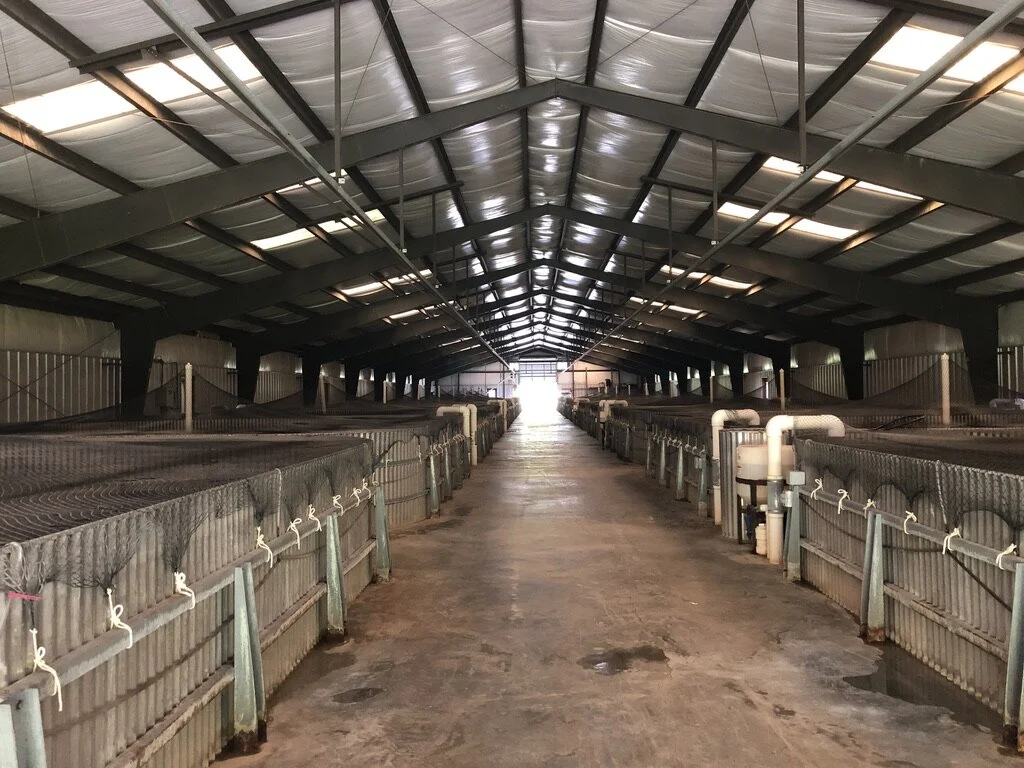Take a tour of Marshallberg Farm
Caviar’s simplicity is key to its appeal. Rich and buttery, caviar is simply salt-cured sturgeon roe and i North Carolina, Marshallberg Farm is sustainably producing osetra caviar through aquaculture, making this renowned indulgence available domestically.
The osetra caviar produced at Marshallberg Farm comes from the Russian sturgeon. You might have heard of beluga caviar as well — osetra roe is smaller and more firm than beluga and the color of the eggs ranges from brown to golden shades.
The team at Marshallberg Farm utilizes an indoor recirculating aquaculture system that processes 1 million gallons of culture water. This system recycles the water and creates no effluent discharge, an environmentally sustainable way to farm these critically endangered fish. The recirculating system includes a tumble through small plastic bits that look like pasta, which filter the water before it's pumped, fully clean, back into the tanks with the sturgeon.
The surgeon roe is cured using only sea salt — the traditional way of preserving these delicate, highly perishable fish eggs. Roe, aka fish eggs, can come from any fish, including paddlefish, salmon, carp and even shellfish like lobster. Sturgeon roe is traditionally the only one to be called caviar, however, and its only called caviar after its been cured with salt.
Sturgeon are an ancient fish that can live 50 to 60 years and don’t start spawning until seven or more years into their lifespan. There are a number of subspecies that range across the globe, above the equator, living most of their lives in brackish water and migrating to spawn in freshwater. Overfishing, pollution and habitat destruction have made sturgeon critically endangered in the wild, so aquaculture farms like Marshallberg are the only sustainable source of sturgeon caviar.
Tour Marshallberg Farm’s Lenoir facility in the photo essay below:







































Shop Marshallberg Farm
Marshallberg Farm
3232 Indian Grave Road, Lenoir, NC 28645
info@marshallbergfarm.com
252.646.1713
